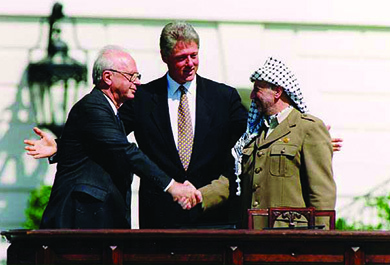| << Chapter < Page | Chapter >> Page > |

As a small measure of stability was brought to the Middle East, violence erupted in the Balkans. The Communist country of Yugoslavia consisted of six provinces: Serbia, Croatia, Bosnia and Herzegovina, Slovenia, Montenegro, and Macedonia. Each was occupied by a number of ethnic groups, some of which shared a history of hostile relations. In May 1980, the leader of Yugoslavia, Josip Broz Tito, died. Without him to hold the country together, ethnic tensions increased, and this, along with the breakdown of Communism elsewhere in Europe, led to the breakup of Yugoslavia. In 1991, Croatia, Slovenia, and Macedonia declared their independence. In 1992, Bosnia and Herzegovina did as well. Only Serbia and Montenegro remained united as the Serbian-dominated Federal Republic of Yugoslavia.
Almost immediately, ethnic tensions within Bosnia and Herzegovina escalated into war when Yugoslavian Serbs aided Bosnian Serbs who did not wish to live in an independent Bosnia and Herzegovina. These Bosnian Serbs proclaimed the existence of autonomous Serbian regions within the country and attacked Bosnian Muslims and Croats. During the conflict, the Serbs engaged in genocide, described by some as “ethnic cleansing.” The brutal conflict also gave rise to the systematic rape of “enemy” women—generally Muslim women exploited by Serbian military or paramilitary forces. The International Criminal Tribunal of Yugoslavia estimated that between twelve thousand and fifty thousand women were raped during the war.
NATO eventually intervened in 1995, and Clinton agreed to U.S. participation in airstrikes against Bosnian Serbs. That year, the Dayton Accords peace settlement was signed in Dayton, Ohio. Four years later, the United States, acting with other NATO members, launched an air campaign against Serbian-dominated Yugoslavia to stop it from attacking ethnic Albanians in Kosovo. Although these attacks were not sanctioned by the UN and were criticized by Russia and China, Yugoslavia withdrew its forces from Kosovo in June 1999.
The use of force did not always bring positive results. For example, back in December 1992, George H. W. Bush had sent a contingent of U.S. soldiers to Somalia, initially to protect and distribute relief supplies to civilians as part of a UN mission. Without an effective Somali government, however, the warlords who controlled different regions often stole food, and their forces endangered the lives of UN workers. In 1993, the Clinton administration sent soldiers to capture one of the warlords, Mohammed Farah Aidid, in the city of Mogadishu. The resulting battle proved disastrous. A Black Hawk helicopter was shot down, and U.S. Army Rangers and members of Delta Force spent hours battling their way through the streets; eighty-four soldiers were wounded and nineteen died. The United States withdrew, leaving Somalia to struggle with its own anarchy.

Notification Switch
Would you like to follow the 'U.s. history' conversation and receive update notifications?